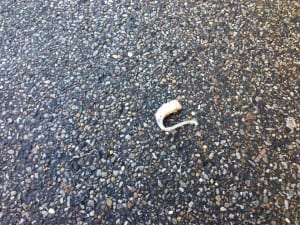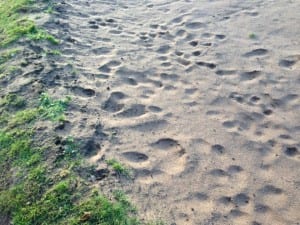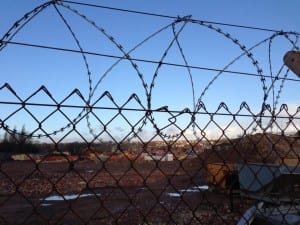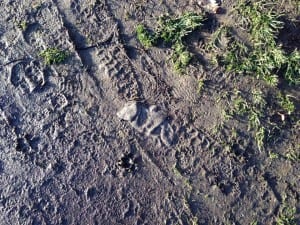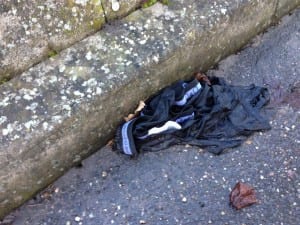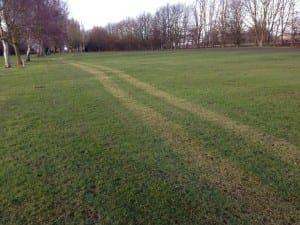The company Forced Entertainment stated how once you know a place well you can confuse the notions of fact and fiction when presenting to an audience. The idea was portrayed in their coach tour performance Nights in this City (1995), where the guide pretended through a comical narrative that Sheffield was alternative cities, such as Rome and Berlin.
Similarly, it feels as though our Site-Specific group are gradually becoming more familiar with the Grandstand location, and we too can start to “negotiate the collapses and collisions of facts and fictions” ((Hill, Leslie and Helen Paris ed. (2006) Performance and Place, Basingstoke: Palgrave Macmillan.)). For example, after last Wednesday’s practical session exploring the exterior and surrounding environment of the Grandstand, Phoebe, Emily and I ‘reconstructed’ our findings in the LPAC. Our discovery of vehicle tracks, paw prints, a hearing-aid, a pair of boxer pants, barbed wire and a glove, (being factual pieces of the site) then became part of a ‘crime scene’ narrative.
Furthermore, Mike Pearson’s question of whether the experience was a “quest” (2010, p. 21) emphasised our imaginary roles as ‘detectives’, and consequently we saw the Grandstand from a different perspective. The question of a “prescribed or proscribed” ((Pearson, Mike (2010) Site-Specific Performance, Basingstoke: Palgrave Macmillan.)) site also sparked our imaginations, and helped us to envisage new themes for our performance.
